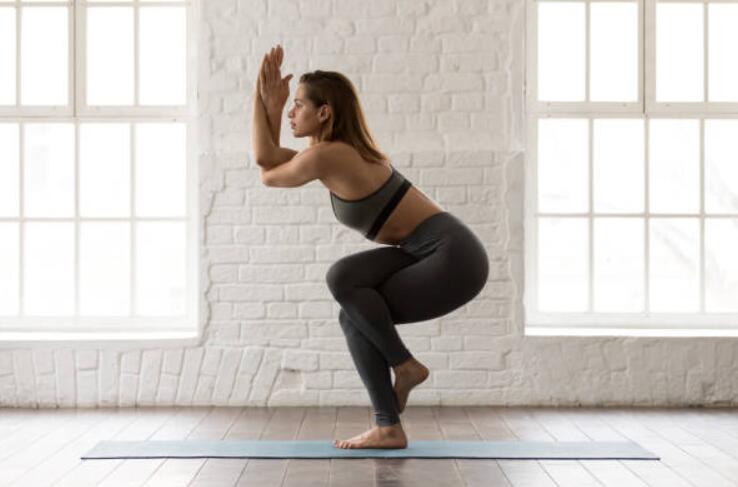If you’re looking to improve your yoga practice, learning how to bind poses is a great way to take things up a notch.
Binding in yoga can add intensity and deepen the effects of classic poses. However, it’s important to remember that binds put a lot of pressure on the body, so it’s essential to properly warm up before attempting any binding poses.
In this article, we will go over some essential tips on how to improve your yoga binds. You’ll learn about the different types of binds and how to prepare your body for doing them safely and effectively. So if you’re ready to take your yoga practice to the next level, read on!
What Is a Bind in Yoga?

In yoga, a bind is “a hand-to-hand grip between the palms, wrists, or forearms of two people.” This grip is generally used to form a connection between two people during partner yoga poses.
In some cases, the bind may also refer to binding one’s own hands together to deepen a stretch or aid in balance.
Binding can be beneficial for both partners in several ways. First and foremost, it helps to deepen the stretch by providing resistance. It also helps improve balance and proprioception (the sense of where your body is in space).
In addition, binding can be used as a tool for communication; for example, if one person is struggling to maintain a certain position, their partner can help support them by gently pulling on the bind.
Binding also helps to create a sense of trust and connection between partners—something that is especially important in partner yoga.
After all, you are entrusting your body (and sometimes your life!) to another person, so it’s important to feel safe and comfortable with them.
Types of Binds
There are many different types of binds that can be used in yoga. The most common bind is the hand-to-hand grip, but you can also bind your wrists, forearms, or even ankles. The type of bind you use will depend on the yoga pose you are doing and your own comfort level.
To help you get started, here are some of the most common types of binds:
– Hand-to-hand grip: This is the most basic type of bind and is often used in partner yoga poses. To do this grip, simply take your partner’s hands in yours and interlace your fingers.
– Wrist grip: This grip is often used in poses where one partner is supporting the other’s weight. To do this grip, take your partner’s wrists in your hands and hold on tight.
– Forearm grip: This type of grip is similar to the wrist grip, but it provides more stability. To do this grip, take your partner’s forearms in your hands and hold on tight.
– Ankle grip: This type of grip is often used in poses where one partner is supporting the other’s weight. To do this grip, take your partner’s ankles in your hands and hold on tight.
9 Tips to Improve Your Yoga Binds

If you’re looking to improve your binds, here are some expert tips to help you out.
1. Warm-Up:
It’s essential to start your yoga session with a proper warm-up to avoid injury and prepare your body for the exercise.
A good warm-up will raise your heart rate and increase blood flow to your muscles. Sun salutations are a great way to warm up for yoga.
2. Stretch Your Back and Shoulders:
Since binds place a lot of pressure on your back and shoulders, stretching these areas before doing any binding poses is important.
A simple way to do this is by interlacing your fingers behind your back and stretching your arms overhead. You can also do a backbend to stretch your back muscles.
3. Start with Non-Harming Techniques:
One of the main tenets of yoga is Ahimsa, which means non-harming. When practicing yoga binds (or any yoga pose, for that matter) be sure to look at where you are and practice non-harming techniques. If you feel any pain, STOP immediately and consult with a doctor or physical therapist.
4. Open Up Your Heart:
When practicing yogabinds, it’s important to open up your heart. This helps creates space in the chest and allows for deeper breathing. It also helps prevent hunching over, which can lead to pain in the neck and shoulders.
5. Be Sure to Nurture Fluid Breathing:
Proper breathing is essential for any good yoga practice, but it’s especially important when doing binds. Be sure to nurture fluid breathing in order to avoid strain on the neck and shoulders.
6. Treat Your Yoga as a Healing Practice:
Yoga is a healing practice that can help alleviate pain in the body caused by tightness and tension. When approaching your bind practice, be sure to treat it as such by moving slowly and deliberately while listening to your body’s cues.
7. Incorporate Meditation into Your Practice:
Meditation is an important part of any good yoga practice (and life!). It helps still the mind and allows you to focus on your breath and movements. When incorporating meditation into your bind practice, be sure to focus on your breath and let go of any thoughts that come into your mind.
8. Stay Motivated:
The best way to improve your bind practice (and any aspect of your life!) is by staying motivated throughout your journey. Set goals for yourself, celebrate your successes, and continue showing up for yourself – even on the days when you don’t feel like it!
9 . Get Creative:
One of the best parts about practicing yoga binds is that there are endless possibilities for creativity! Don’t be afraid to experiment with different techniques and approaches until you find what works best for you.
3 Popular Yoga Binds to Try
Yoga Binds: Half Camel
The Half Camel is a great bind for beginners because it is relatively easy to do. To do the Half Camel, start in a standing position with your feet hip-width apart.
Then, place your hands on your hips and bend backwards at the waist. Next, bring your right hand behind you and grab hold of your right ankle.
Finally, arch your back and look up at the ceiling. Hold this position for five breaths before releasing and repeating on the other side.
Yoga Binds: Half Camel with Prayer Twist
The Half Camel with Prayer Twist is a more advanced bind that is great for lengthening the spine and opening up the chest.
To do this bind, start in the same standing position as the Half Camel bind. Then, place your hands on your hips and bend backwards at the waist.
Next, bring your right hand behind you and grab hold of your right ankle. Finally, twist your torso to the left and look over your left shoulder.
Hold this position for five breaths before releasing and repeating on the other side.
Yoga Binds: Camel Pose
Camel Pose is a deep backbend that is often used as a preparation for more advanced backbends such as Wheel Pose or King Pigeon Pose.
To do Camel Pose, start by kneeling on the ground with your feet hip-width apart. Then, place your hands on either side of you and press into them to lengthen your spine. Next, reach back with both hands and grab hold of your ankles.
Finally, arch your back and look up at the ceiling. Hold this position for five breaths before releasing out of it slowly.
4 Extra Hacks on Doing Yoga Binds
But if you’re new to yoga, they can be tough to master. This is where our experts come in. Here are some tips on how to improve your yoga binds.
1. Use props.
If you’re struggling to bind without pain, try using props such as straps or blocks. This will help you ease into the bind and get a feel for the correct alignment.
2. Don’t force it.
One of the most common mistakes people make when trying to bind is forcing their body into the position. This can lead to injury, so be sure to listen to your body and only go as far as you’re comfortable.
3. Move slowly and mindfully.
Take your time when moving into the bind position. Be mindful of your breath and focus on your alignment. The slower you move, the more control you’ll have over yourbinds. And remember, there’s no rush!
4. Practice, practice, practice!
The more you practice, the better you’ll get at binding correctly. So don’t be discouraged if it takes a few tries to get it right—keep at it, and eventually, you’ll nail those yoga binds like a pro!
Conclusion
With a little bit of practice, you’ll be able to get into any yoga bind without any problems at all. Just remember to use proper alignment, take it slow, and be patient with yourself. Soon enough, those pesky binds will be a thing of the past!
